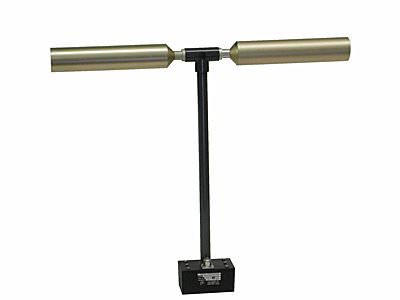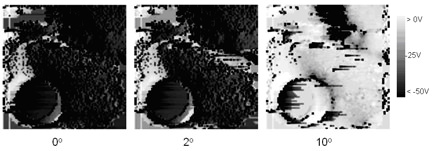Many astronomers feel that the Moon would be an excellent location for telescopes, — both on the surface and in lunar orbit – and these telescope could help answer some of the most important questions in astronomy and astrophysics today. One proposal calls for a lunar orbiting low frequency antenna that could measure the signatures of the first collapsing structures in the early universe. Dr. Jack Burns from the University of Colorado, Boulder, discussed the idea for the Lunar Cosmology Dipole Explorer (LCODE) at the NASA Lunar Science Institute’s Lunar Forum this summer.
“The Moon in many ways is a truly unique platform from which we can look outward into the cosmos and do some unique astronomical observations,” said Burns, who is also the Director of the NASA/NLSI Lunar University Network for Astrophysics Research (LUNAR).
What makes the Moon so inviting is that the lunar far side is uniquely radio quiet in the inner part of the solar system, as the far side is always facing away from the Earth, and the Moon itself blocks out any interfering man-made signals from radio, TV and satellites.
In this radio quiet zone, astronomers could study the very early universe, back to less than half a billion years after the Big Bang, probing what is called the Dark Ages, before the first stars and galaxies formed.
LCODE would be a satellite orbiting the Moon carrying a single dipole antenna, kind of like your car antenna, Burns said, but it has two ends. “It flies around the Moon and we take data only when we are above the far side, the shielded zone where we are free of radio interference,” said Burns, “and that allows us, because it is so quiet there, to take measurements of these very faint emissions from this very early era in our universe’s history.”

The orbiting dipole would allow scientists to look for these signals over the entire sky. If that is successful, the next stage would be to put an array of dipole antennas on the surface, perhaps even about ten thousand antennas, and use it as a radio interferometer that would “allow us to actually get some resolution to do some imaging,” Burns said, “and explore the composition of these structures in the early universe that eventually go on to form stars and galaxies.”
Other proposals for doing radio astronomy from the Moon would be to study the sun at low frequencies, below 10 megahertz. The sun emits very strong low frequency radio waves, and these are related to Coronal Mass Ejections, which produce very high energy particles which can interfere with satellites and could potentially be very harmful to future astronauts traveling in interplanetary space. “We hope to be able to image and to understand how these particles are accelerated,” Burns said.
The other interesting regions of the Moon from which to do astronomy would be the poles in permanently shadowed craters, which are very cold — only about 40 degrees above absolute zero – which would make an excellent site for infrared telescopes which need to be cooled down to very low temperatures.
You can listen to an interview with Jack Burns about LCODE on the 365 Days of Astronomy podcast.



